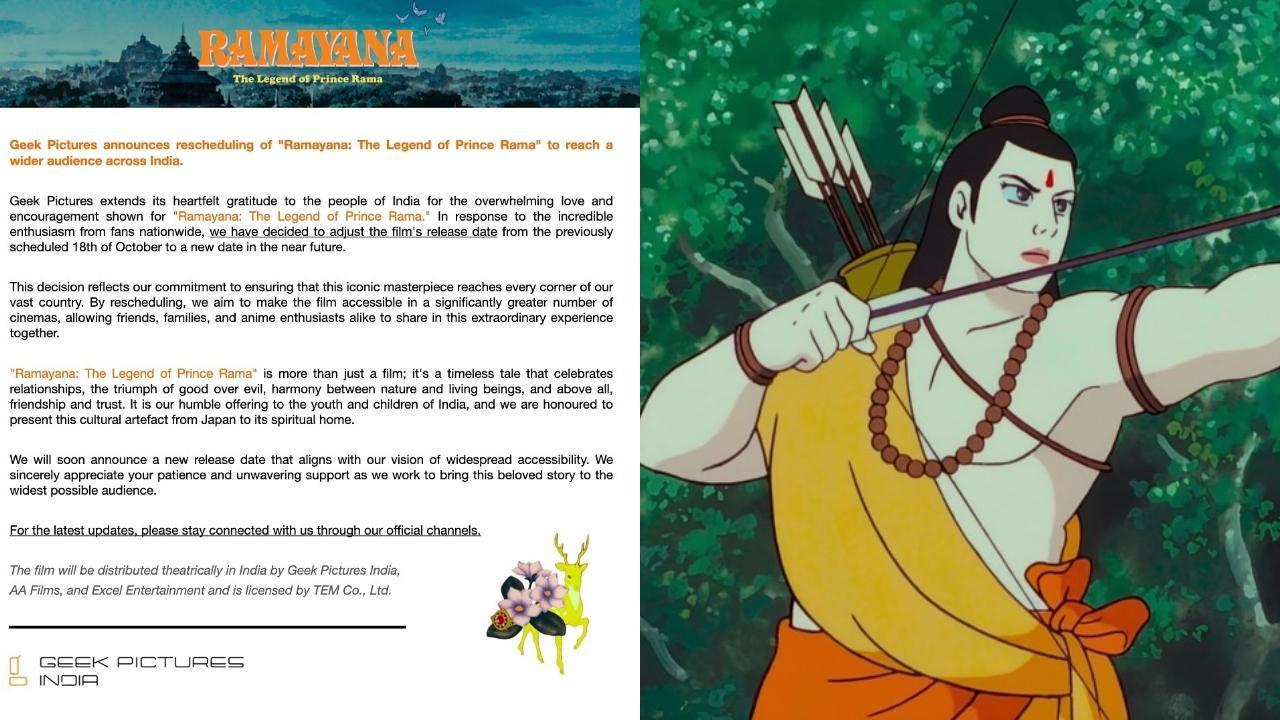
The eagerly awaited theatrical release of ‘Ramayana: The Legend of Prince Rama’ has been postponed, leaving audiences on edge as they anticipate the chance to experience this cinematic masterpiece in stunning 4K. Originally slated for a return to the big screen after 31 years on October 18, the release has been rescheduled to ensure the film attains the widespread accessibility it deserves.
This extraordinary film, directed by Koichi Sasaki and Ram Mohan with vision by Yugo Sako, holds the distinction of being one of the first anime adaptations of an Indian epic, crafting a unique cultural bridge between India and Japan. Completed in 1993, ‘Ramayana: The Legend of Prince Rama’ marked a pioneering moment in the world of animation, introducing the grandeur of Indian mythology to a global audience through the distinct and vibrant style of Japanese anime.
The journey of bringing this epic tale to life was deeply rooted in Yugo Sako’s passion for Indian culture. His journey began with visits to India for a documentary project on archaeological excavations. During these visits, Sako discovered the Ramayana—a story rich with universal themes such as love, friendship, loyalty, and the triumph of good over evil. He envisioned these themes transcending cultural boundaries through animation, reaching diverse audiences worldwide.
The creation of this animated epic was no small feat. A dedicated team of 450 artists, masters of their craft, revivified the epic through the hand-drawn traditional animation technique employing nearly 100,000 intricate cells. Sako’s choice to pursue hand-drawn animation over computer-generated imagery underscored his belief in capturing the warmth and shared humanity present within the story. The painstaking and labor-intensive process imbued the film with an emotional richness that resonated globally, securing international acclaim.
The influence of ‘Ramayana: The Legend of Prince Rama’ on the animation industry is incontrovertible.
. Many animators who contributed to this film later went on to work on globally recognized productions including ‘Pokémon’, ‘Dragon Ball Z’, ‘Doraemon’, and various Studio Ghibli films. The impact of their artistic contributions on future projects has helped cement the film’s legacy not only as an adaptation of myth but as a beacon of animation excellence.
As excitement mounts post the release of teasers and promotional posters, the decision to delay the film’s release underscores the filmmakers’ commitment to ensuring the story of Prince Rama finds the audience breadth it merits. This anticipated journey will soon be available to a diverse audience with the film’s multilingual presentation in Hindi, English, Tamil, and Telugu, making it accessible across linguistic and cultural spectrums in India.
The film is set to be distributed by Geek Pictures India, AA Films, and Excel Entertainment, who are dedicated to delivering the film’s compelling narrative and visual artistry in cinemas nationwide. It promises to captivate audiences, delivering a unique blend of Indian cultural richness through the prism of Japanese animation brilliance.
In an official announcement on social media, the production team confirmed the forthcoming modifications to the film’s release schedule. The delay reflects their unwavering dedication to optimally engage an anticipated resurgence and widespread audience response.
‘Ramayana: The Legend of Prince Rama’ remains a quintessential narrative, intricately weaving together story themes that transcend time and culture, emphasizing enduring allegiances, the inherent goodness within humanity, and a harmonious connection between all living beings and nature. These motifs continue to resonate profoundly with audiences, standing as a powerful testament to the timeless value of trust and friendship within storytelling.
Ultimately, while audiences eagerly await its re-release, the anticipation surrounding ‘Ramayana: The Legend of Prince Rama’ endures. Its distinguished place as a pioneering anime feature remains secured, highlighting the rapport between Indian and Japanese storytelling traditions, and ensuring its legend will persist in captivating future generations with its inspiring narrative and artistic integrity.












